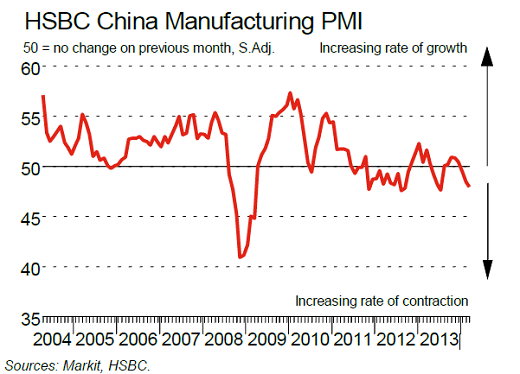Why are stocks steaming ahead while the global economy sputters?
Stocks continue to rise, with the S&P 500 pushing to new record highs amid a general sense of calm and confidence. Or maybe it's complacency and overconfidence.
Consider that the S&P 500 pushed to a record today with less than 8 percent of its components hitting 52-week highs. When the index hit a record back in May 2013, according to Jason Geopfert at SentimenTrader, it did so with nearly 40 percent of its components participating. Over the last 10 years, such a narrow rise to new highs happened 10 other times. But only twice -- in September 2006 and January 2013 -- did these additional gains persist.
More investors may be starting to worry that economic fundamentals and corporate profits can't support the climb in stock prices. Earnings and economic growth estimates have been dropping. The data remains on the soft side, as the drag from a severe winter fades and it becomes clear that the problem can't be dismissed as weather-related.
As a result, bullishness is centered on a narrower and narrower subset of the market. That explains why momentum favorites in sectors like biotech and high-tech have been rolling over lately. The Biotech iShares (IBB) is down nearly 10 percent from late February while the S&P 500 SPDRs (SPY) are up 3 percent.
For now, investors have largely looked past this weakness as the "Goldilocks" theme remains in play: Growth is not fast enough to encourage more rapid policy-tightening by the Federal Reserve and other major central banks, but it's not slow enough to raise concerns about another dip in the economy.
Turning to the economic data, Markit's Global PMI manufacturing index sums it up nicely: Global manufacturing activity cooled to a five-month low in March, but remains above its average for the current 16-month expansion. Activity increased for the 17th consecutive month thanks to strong performances by the U.S. and Europe.
But the rate of expansion cooled slightly, led by declines in activity in Asia. Chinese production contracted outright for the second straight month, and by the greatest amount since November 2011.
There is some evidence that policymakers in Beijing are responding to the slowdown, as China tightens monetary conditions to clamp down on runaway credit growth. There were reports on Monday that the country's largest shipbuilder, China Rongsheng Heavy Industries Group, had agreed with its banks to extend loans and other financing worth $1.6 billion into 2015.
Obviously, this isn't sustainable. It's the old "extend and pretend" model of postponing the inevitable defaults or writedowns that are coming as many industries -- such as steelmaking and shipbuilding -- suffer from a drop in demand and profit damaging overcapacity. The company reported that its full-year loss in 2013 surged to 8.9 billion yuan ($1.4 billion), up from a loss of 572 million yuan in 2012.
In short, it's clear that China's debt problems are growing as its economy keeps slowing.
For now, investors aren't excessively worried. Years of near misses and stick saves on issues like the Eurozone debt crisis, U.S. fiscal cliff and debt ceiling, Syria, Ukraine, and all the rest have inoculated people to worrying about the "Big One" that could force stocks into a 2011-style correction, or something worse.
But that may eventually change.
Anthony Mirhaydari is founder of the Edge and Edge Pro investment advisory newsletters, as well as Mirhaydari Capital Management, a registered investment advisory firm.

